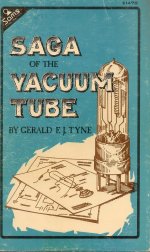Additional: Earlier in this thread Refugee1 and PRR already mentioned 4 V filaments. In the thirties in Europe many radio's had a direct heated rectifier (like the 1801, AZ1, etc.) operating on 4 V while the other tubes also had 4 V filaments (like AK2, AF3, AF7, ABC1, AL5, etc.). This seems to contradict your theory.
Rectifier tubes came about at a time when reliable insulation between the heater and cathode could not be obtained with a good enough yield to be used for a manual insertion production line operation. This pretty much demanded a separate heater winding for the rectifier.
We don't think too much about H-K shorts today as they aren't too common. They were fairly common in old radios from the 40's and 50's. There were some 117 volt tubes with a pentode and a rectifier in a common octal bottle intended for direct line operation in a mono record player with a ceramic cartridge. H-K shorts were common in these, which usually resulted in an open heater and sometimes a blown electrolytic cap. 117L7 comes to mind.
As stated the 6.3 volt heater standard evolved from the common use on three lead acid cells in series. Most US cars ran a "6 volt" electrical system until the late 40's / early 50's. My first car was a 1949 Plymouth. It's radio ran an 0Z4 gas rectifier (no heater) and a pair of 6V6's in push pull for the output stage.
Two of those radios in the trunk feeding 6X9 inch speakers on the rear deck amplifying the portable Panasonic cassette deck on the seat next to me provided the best auto sound system in my high school.....in 1970. The car sound world had not yet seen the booster amp or the Tenna Ranger Mindblowers (amplified speakers).
Why 5 volts for the rectifier? Maybe because 5 volt DHT's already existed? It would be pretty easy to make a rectifier out of a twin plate 2A3 with no new parts. I don't know for sure.
Formerly called the Galvin Manufacturing Corporation, Motorola got started making battery eliminators in Paul Galvin's garage. The name comes from "Motor Car" and "Victrola" to imply mobile sound. The car radio was essentially invented by Motorola who made them for most of the auto manufacturers. The beast in my 49 Plymouth was a Motorola radio. I would eventually work for Motorola from 1973 to 2014. There are lots of Motorola branded vacuum tubes in circulation, but they never made any themselves. Most are GE's, but Sylvania's and even some Japanese Motorola tubes can be found.
We don't think too much about H-K shorts today as they aren't too common. They were fairly common in old radios from the 40's and 50's. There were some 117 volt tubes with a pentode and a rectifier in a common octal bottle intended for direct line operation in a mono record player with a ceramic cartridge. H-K shorts were common in these, which usually resulted in an open heater and sometimes a blown electrolytic cap. 117L7 comes to mind.
As stated the 6.3 volt heater standard evolved from the common use on three lead acid cells in series. Most US cars ran a "6 volt" electrical system until the late 40's / early 50's. My first car was a 1949 Plymouth. It's radio ran an 0Z4 gas rectifier (no heater) and a pair of 6V6's in push pull for the output stage.
Two of those radios in the trunk feeding 6X9 inch speakers on the rear deck amplifying the portable Panasonic cassette deck on the seat next to me provided the best auto sound system in my high school.....in 1970. The car sound world had not yet seen the booster amp or the Tenna Ranger Mindblowers (amplified speakers).
Why 5 volts for the rectifier? Maybe because 5 volt DHT's already existed? It would be pretty easy to make a rectifier out of a twin plate 2A3 with no new parts. I don't know for sure.
6.3V comes in very suddenly with Car Radio.
Cars had been around, but with little or no electricals. Radio simmered a while before the tube and loudspeaker. Cost was a problem too. But several outfits (notably one later known as Motor-ola) had car radios in 1930.
Formerly called the Galvin Manufacturing Corporation, Motorola got started making battery eliminators in Paul Galvin's garage. The name comes from "Motor Car" and "Victrola" to imply mobile sound. The car radio was essentially invented by Motorola who made them for most of the auto manufacturers. The beast in my 49 Plymouth was a Motorola radio. I would eventually work for Motorola from 1973 to 2014. There are lots of Motorola branded vacuum tubes in circulation, but they never made any themselves. Most are GE's, but Sylvania's and even some Japanese Motorola tubes can be found.
Last edited:
Most probably your theory is right, as it also might explain why there weren't 5 V rectifier tubes here in Europe (until the GZ34/5AR4): We just had no 5 V heated power tubes here.
Best regards!
Best regards!
The 5V rectifier was an American thing driven by the large industrial labs GE & Westinghouse in the early 1920s. All covered in a few pages (~p 324) in Gerald FJ Tyne's 'Saga of the Vacuum Tube'. The 80/280 was hatched in May 1927 as the UX280 at Westinghouse. Many of the triodes & other tubes in development used 5V cathodes, it was a natural progression to simply use what was known to work.🙂
